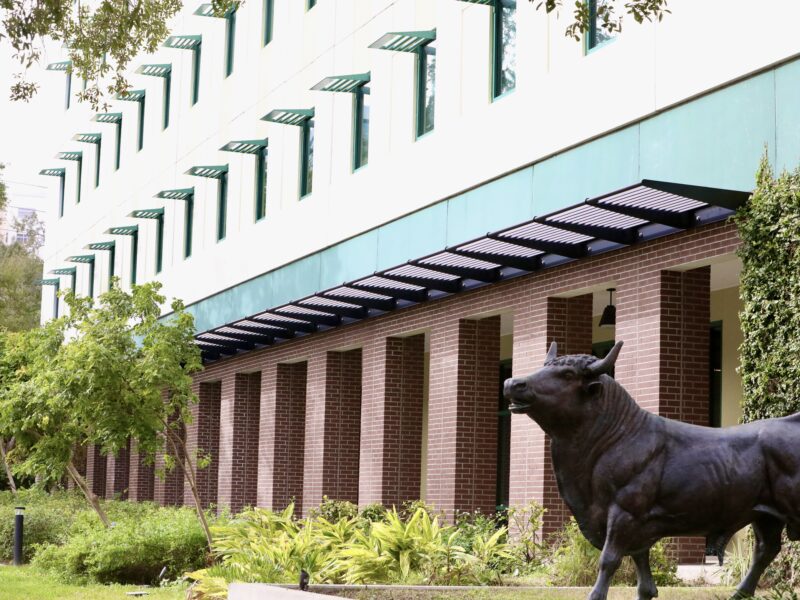Pictured Above: Lydia Oratowski is a senior mass communications major.
Courtesy of Lydia Oratowski
By Lydia Oratowski
A photograph is worth a thousand words, but what happens when photographers edit that photo? Are they adding to the story? Taking something away? Maybe changing it entirely?
By adding music to a video, the mood of the story is altered. The same can be said for changing a photo and making it brighter, darker or converting color to black and white. Blurring a face also changes the story, removes emotion from a photo, and may lead readers to question the honesty of a photographer or their employer.
There are a variety of legal and ethical issues photojournalists need to consider before publishing a story, including weighing the privacy of people against the importance of conveying information to the public.
As media outlets like NPR report an increase in requests to hide protesters’ faces in order to protect them from backlash, photographers have to consider how that could change the story they tell.
Privacy is something photojournalists should consider before they even snap a photo. When privacy must be maintained, photographers can take photos that still tell the tale without showing faces – as you might expect to see with stories about children in schools or patients in hospitals.
But protests are not private, so protesters should not expect privacy. When a group of people organize and gather outside a government building, they probably have something meaningful to say. The First Amendment protects people’s right to protest and the press’ right to cover the news.
Anonymous faces in a photo would be questioned just like anonymous sources often are in news stories. Instead of focusing on the news, readers might focus on the blurred face. Who is that person? Why are they hidden? Are they even real protesters?
Many news agencies even have strict rules about editing photos to avoid altering the story.
The Associated Press says “no element should be digitally added to or subtracted from any photograph. The faces or identities of individuals must not be obscured by Photoshop or any other editing tool.”
Even if the media were to start blurring protester faces, where should the line be drawn? Is a press photographer supposed to ask permission from every person in a crowded street? Should they just blur protester faces, or people watching parades too?
An article from The Poynter Institute addressed the ethics of the issue, quoting photographers that try to get permission when they cover protests related to sensitive topics like immigration, and others that believe a protest is an important public demonstration that should be photographed and broadcast.
“I don’t think the answer is to stop taking photos or videos. I think the answer is to do it responsibly, fairly and respectfully,” Lynn Walsh, the society of Professional Journalists’ ethic chair, told Poynter.
In the same article, comments from a faculty member at Poynter also note how police and protesters are similar, in the sense that they only want to be “shown in the best light.” This is something most people can relate to, but photojournalists are trying to capture history as it happens. Their goal is to tell the story.
Imagine flipping through a history book with photos changed, to protect the privacy or the reputations of the people in them. Part of the story would be lost as the napalm girl, Kent State shooting and Holocaust victims become blobs. The photo of Dr. Martin Luther King Jr. taken at the March on Washington would be less powerful if the giant crowd behind him was just a blur.
History is blurry enough already. We need clear photos to preserve the present for the future.


